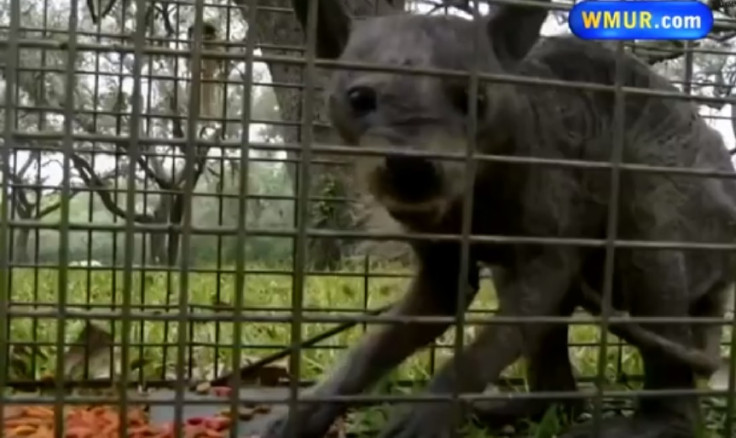Texas: Couple Claim to Capture Live Legendary Hairless El Chupacabra in Garden
A Texas couple believe they have captured the mythical animal El Chupacabra in their back garden.
Jackie and Bubba Stock, from Ratcliffe, found the hairless, cat-sized creature eating corn outside their home on Sunday.
Jackie told KAVU-TV: "He called me to come and look, and I said 'Bubba, that looks like a baby chupacabra'."
The animal has a hairless back, large claws, sharp teeth and was growling at the couple as they tried to capture it.

According to their neighbour, Arlen Parma, the animal is not a raccoon. He commented: "You know, I hunted coons 20 years with dogs and I ain't never seen anything that look like that right there."
Parma added that the animal's growl differentiated it from the small, masked mammal.
"Coon don't make that noise, or a possum. What makes that noise? I guess a chupacabra does - I don't know."
Although the residents of the town are convinced this is the elusive chupacabra, Brent Ortego, a biologist for Texas Parks and Wildlife, offered a different explanation.
He told ABC news: "The animal in the cage as best I can tell from the view is some form of a small canine." Animals in this familial bracket could include a coyote, dog or even a fox and the mange may have caused the animal to lose its hair.
Yet the theory that the chupacabra exists has never been disproved. Ortego added: "It's never been proven to be a unique species, it was always something out there that allegedly was said to cause harm or threaten to cause harm to people or to livestock."
Bubba Stock said that whether or not the animal is a mythical creature, it is being kept on a diet of cat food and corn on their land.
He said: "We were just trying to figure out what it is because we've never seen anything like that on our place before."
The chupacabra, otherwise known as the "goat sucker", is a legendary cryptid rumoured to inhabit parts of the Americas. The first sightings were reported in Puerto Rico in 1995 and its name comes from the animal's alleged habit of attacking and drinking the blood of livestock.
Eyewitness sightings of the creature have been reported as far north as Maine and as south as Chile, as well as in Russia and the Phillipines. Some have said the animal has a row of protruding spines, but descriptions vary.
© Copyright IBTimes 2024. All rights reserved.






